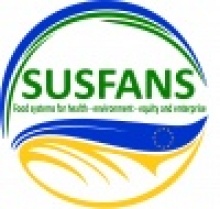Can we bank on seafood for a healthier food consumption? In-depth analysis of the european fishing sector
Seafood is generally a healthy protein alternative in a diet. Official dietary advices often recommend to eating more seafood and vegetables and less beef. At present, seafood accounts for around 17 percent of the global population’s intake of animal protein and nearly 7 percent of all protein consumed. Seafood also serves as an important source of minerals, contains all essential amino acids, and provides essential fats and vitamins. However, some species from certain fishing areas may cause health risks due to contaminants. Furthermore, there are sustainability challenges remaining for a range of production systems that still need to be resolved.
With over 2,500 species being fished for and over 600 species being farmed, the seafood sector is truly diverse which could contribute to resilience of the seafood system. However, European consumers tend to choose mainly wild-caught seafood (such as tuna and cod) and low diversity of farmed fish (mainly salmon). From a positive side, these systems are generally in the lower range in terms of energy use and greenhouse gas emissions compared to land-based animal production systems; other top-consumed seafood products for the EU, like tropical shrimps, contribute to much more emissions.
However, tuna- and cod fisheries and farming of salmon represent seafood systems with a diversity of practice, and thus improvement potentials.
Eating more fish may cause problems
Seafood from capture fisheries may be a good alternative to produce food with less impacts and resource use than many land-based protein production systems, as fisheries do not require inputs like feeds, fertilizers or pesticides. However, there are some problems when seafood from capture fisheries is to play an increasing role in global food security for year 2050:
-
There are limits to natural production, many stocks are overexploited. Even if all fisheries would be exploited optimally in terms of yield, estimates show that yield could potentially increase with 20% – and this figure is strongly affected by emerging challenges such as climate change.
-
The global fisheries resource is highly skewed towards utilization by a limited number of countries. The full effect on food security for countries with undernourished citizens is currently debated.
-
Consumers in the EU and other more wealthy regions prefer to eat seafood species at the top of the food web, which has lower production capacity.
-
The full effects of fisheries on marine ecosystems are still largely unknown. Seafood production from aquaculture is on the other hand playing an increasingly important role in the food system, exhibiting a remarkable increase in production volume since the 1980s.
For aquaculture to increasingly contribute to meet the projected demand, this requires technological innovations and changing consumer demand related to:
-
Reduced dependence on feed inputs based on meal and oil from capture fisheries. Salmon and tropical shrimp farming are systems that require a higher level of marine based ingredients. Furthermore, right policy actions are needed to solve emerging competition between different uses of crops.
-
For aquaculture growth in the EU, conflicts about multiple uses of the coastal zone must be solved.
-
Increased farming of non-fed species and species with low feed demand (in particular comprising marine protein) and oil calls for change in EU consumer preferences.
Overall, seafood both from fisheries and aquaculture has a major potential to contribute to sustainable Food and Nutrition Security (FNS). This depends on the path chosen by policy-makers, producers and consumers. In fact, it has been argued that, from a global perspective, feeding 9 billion people is likely to require a decrease in seafood consumption per capita and year. To achieve continued stability of supply and sustainable demand for seafood, there are several options ahead:
Case studies related to innovations of seafood systems. For example: What happens when we minimize competition of feed resources through use of side-streams, identify and make use of the best available farming technology for popular consumption species such as salmon and cod, or when we increase production of the most efficient feed-converters and those not requiring feed at all or with low marine protein/oil content?
-
Target the consumption side and evaluate effects from altered consumption patterns such as smaller sizes of fish fillets produced from aquaculture, increased awareness about what characterizes more sustainable seafood, produce less waste and other.
-
How could sustainable policies be formulated, targeting at identifying and spreading “brave” food dietary advice can assist consumers to make better choices both in terms of health and sustainability?
In the SUSFANS deliverable 4.2 on “The drivers of fisheries and aquaculture production in the EU”, Sara Hornborg, Kristina Bergman and Friederike Ziegler provide a detailed analysis the European seafood sector.
The drivers of fisheries and aquaculture production in the EU
Sara Hornborg, Kristina Bergman and Friederike Ziegler (SP Technical Research
Institute of Sweden)


Comments
Add new comment